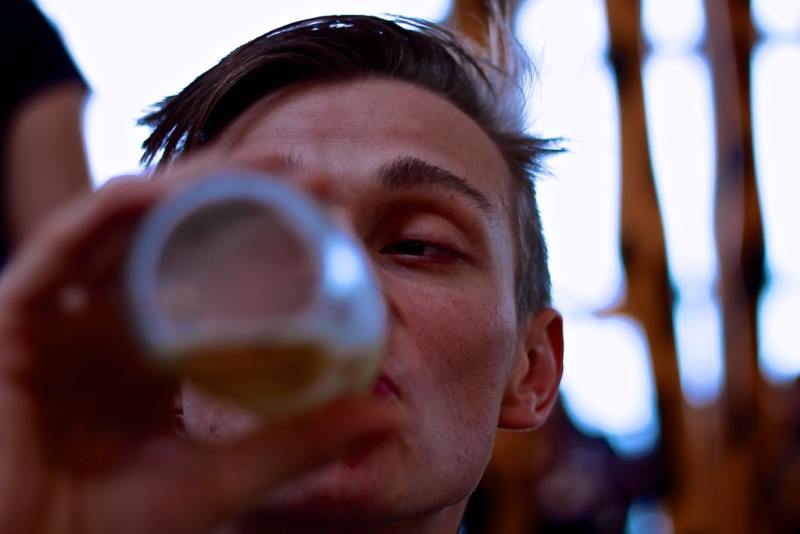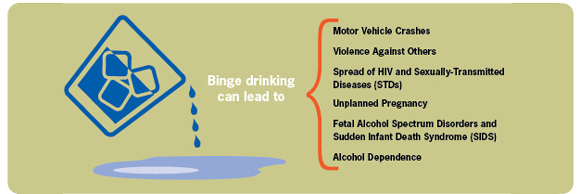Binge Drinking By The Numbers
Alcoholism isn’t measured by large quantities of drink in one day, but almost all alcoholics have engaged in binge drinking at one time or another. Maybe thousands of times, maybe a few dozen. This means men having 5 drinks or women 4 in 2 hours or less. This definition is from the Centers for Disease Control, which we’ll be revisiting throughout the post.
A lot of the posts I make are for particular insights (I’ve gotten the hard way) about one facet of alcoholism. But I think it’s key to look at data. Different people are affected by different types of reasoning, and if you’re a facts and figures person struggling with drink, here’s a look at how the hard drinking you’re doing fits in with the larger world around you.
Here are some stats from 2012:
- 6% of people 18 and older said they’d binge drunk in the last month.
- 1% of college students aged 18-22 had engaged in binge drinking in the last month.
How Much Do Binge Drinkers Binge?
This question was undertaken by the CDC in 2010, in a report published in 2012. Here are some of the findings, which may be a bit shocking:
- Average frequency of binge drinking among binge drinkers is 4.4 times per month
- Intensity of the binge was 7.9 drinks per binge.
- Drinkers aged 65 and up had the highest frequency: 5.5 times per month
- Drinkers with incomes of $75K per year or higher had the highest binge drinking prevalence, while those with incomes under $25K binged most frequently, 5 times per month.
- Binge drinking accounts for 80,000 deaths per year
- 20% of binge drinkers also engage in cocaine abuse
Some other odds and ends: roughly 90% of drinking done by kids under 21 is done during binges.
Binge drinking is twice as common among men than women.
Behind the Stats
You’re probably wondering how to process these stats, what they could possibly mean to you, etc. You’re living your life and you might not necessarily care how many thousands of people do what and what that has to do with you. But within the numbers are some patterns and some ways of looking at your drinking and about how it fits into the general landscape around you.
Bingeing with Jerry
Back when I lived in Albuquerque, at the height of my alcohol problem, I had a good friend named Jerry. Jerry had spent some time working as a technician down at the local radio station and he was a big music enthusiast. He made some money on the side selling some old blues 45’s and LP’s. Whether it was records or CD’s, we listened to a lot of blues music while we’d hang out.
We had a two-fisted method of drinking: we’d have lager in mugs, but Jerry had a fifth of whiskey on the coffee table with two shot glasses. Basically, Jerry’s little nervous tic was, when there was any pause in the action, he had to pour a shot. So we’d be sitting there listening to blues songs and drinking beer. We wouldn’t be in any hurry, not really draining our glasses. But every time the song would end, he’d pour two shots of whiskey. Now, there’s no reason to be a bad sport about it or be weird, so I’d do a shot with my buddy—every three minutes. Now, it would slow down, but that would mean that he’d pour us some in a glass with ice. We’d re-fill our beer mugs. Jerry was not the kind of guy who’d let someone’s glass be empty—it was like some tragedy to have an empty glass.
Now, if I’m hanging out by myself drinking, I’m not going to pour shots like I’m at some frat party. I drank whiskey, sometimes rum, occasionally vodka. I’d have a beer sometimes the way someone would down a glass of water, just a diversion. But the drinking, while excessive, wasn’t binge drinking. When I was with my girlfriend, I had to go slowly, and sometimes she insisted I mix Coke with the whiskey.
So, as you can see, the binge drinking of some of my friends fueled my binge drinking.
Costs of Binge Drinking
- Binge drinkers are 14 times more likely to drive drunk than others
Here’s a story about one of my trips home from Jerry’s house. Albuquerque is strung together by very long, straight roads. I guess that kind of spreads traffic out, particularly at odd times, like very late at night. One time when I was on the way home from Jerry’s—after many shots, of course—I was numb and elevated into some higher state, kind of out of my body. I got these thoughts about something like how life was a big funhouse, and I started thinking of myself as being in one of those bumper cars arenas.
I remember this very broken, very fragmented. I can see the neon on some fast food place, the doorway of some other business, some cars. I don’t know how long it lasted, or what the details were, but I basically drove around in circles in the middle of a major Albuquerque road—a long continuous series of u-turns. There were other cars, honks of the horn, etc. I ended up in the driveway of some business—I’m pretty sure. I remember being on a perpendicular road, a bit later. It was very unclear. I didn’t crash, didn’t hurt anyone. But it was clearly a possibility, a stupid thing to do.
One of the things that was disturbing was that, the next morning, I was so hazy about what had happened. At first I remembering pulling one big doughnut in the middle of the road. Only later did the whole circle thing, six, seven loops, occur to me. Piece by piece, more of it came back, and it came back in a way that But it was so vague, I wasn’t even sure it had happened. More of it came back a week or so later.
There was a time later that I did get picked up for drunk driving, but this incident was the worst. Jerry got in a one-car accident and broke his hip.
There’s an interesting connection between statistics and real-life occurrences, between data and the individual. No one wants to identify with the giant, abstract masses, and no one thinks the things he or she does has anything to do with hundreds of thousands of other people.
But what the statistics do is show the cumulative harm done when a lot of people think that way. Here’s the thing. Everyone says, “I don’t want to be just a statistic,” or “I’m not just a statistic.” But you really end up being one when you do things they keep statistics on. True, they don’t keep statistics on people whipping doughnuts on city streets. They just call it drunk driving. But it’s a statistic nonetheless.
How Not to Be a Statistic
One thing to keep in mind is that there are a lot of activities for which they just do not keep statistics. And these are the most meaningful human activities, and the ones that will be most important to your continued sobriety.
For example, when has anyone kept statistics on keeping your resolve? On making up your mind that you were going to do something, and toughing it out, sticking to it? Has anyone kept statistics on brushing aside temptation? Do you expect to go to some website and see statistics on setting daily goals and meeting them? These things are subtle and important and fantastic and no one keeps stats on them.
That’s one of the takeaways you have from all these numbers—don’t be one.
Photo Credit Brian Fey on Flickr



